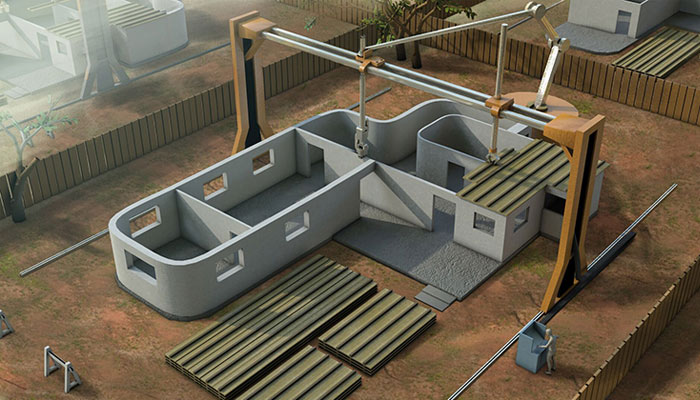As we navigate through the evolving landscape of engineering, one discovery stands prominently in the industry of building: 3D fabrication. This remarkable approach is transforming the way buildings and frameworks are envisioned and built, bringing forth a new era of effectiveness, sustainability, and innovation.
Reshaping Construction: One Stratum at a Time
The adoption of 3D printing in building presents various transformative gains. Chief among these is the substantial decrease in substance excess. Conventional construction techniques typically result in significant waste materials that lead to ecological waste. In comparison, 3D printing utilizes a meticulous layer-by-layer method, consuming only the necessary quantity of substance and thus limiting excess substantially.
Another compelling advantage is the immense decrease in development period. Developments that conventionally require months can be completed in a segment of the duration with 3D printing systems. This acceleration is due to the mechanized nature of 3D devices that can function 24/7 without worker involvement, significantly reducing complete construction deadlines.
Moreover, 3D fabrication unlocks possibilities for building sophisticated, tailored structures at no extra cost. The versatility of 3D machines enables for detailed patterns and shapes to be created that would either be highly expensive or inconceivable to attain with conventional infrastructure methods. This feature not only enhances design aesthetics but also enables builders to optimize designs for better efficiency and longevity.

Cutting Expenditures and Improving Accessibility
Budget reduction is yet another notable benefit brought about by 3D manufacturing in building. By minimizing manpower expenses and shortening the duration required to complete projects, the total budget associated with constructing edifices is lowered. Furthermore, low-cost 3D fabrication units are growing more attainable, making this method within reach of startup firms and individuals enthusiastic to discover its capabilities.
The affordability of these units also paves the way for creativity in connected fields such as clothing manufacturing. While mainly recognized in construction industries, the scope of 3D manufacturing extends into various areas including fashion. Here, creators experiment with 3D manufactured attire, expanding creative constraints and revolutionizing material handling while gaining cost-effective fabrication expenditures.
An Eco-Friendly Future Driven by Technology
Eco-friendliness is another pillar of this innovation’s attraction in the building sector. 3D printing encourages a eco-conscious method to development by cutting substance waste and resource consumption. Additionally, it supports the integration of green resources like reclaimed plastics or composite materials, which additionally decreases the ecological effect of this traditionally resource-intensive sector.
The global movement to green approaches discovers a powerful partner in 3D fabrication technologies, potentially transforming how building guidelines and standards are established moving ahead. By implementing these advanced processes, the building industry advances toward reaching greener functional strategies.
Turning Dreams to Existence
Visualize public facilities in low-income regions being erected within weeks to serve pressing requirements or designers crafting wonders reminiscent of environmental formations that blend effortlessly into their landscapes – such situations are not merely hypothetical but are quickly becoming feasible through 3D printing.
While these achievements mark just the onset, they suggest a future where development aligns seamlessly with both cultural dreams and ecological stewardship.
If we advance on this trajectory, building will not only mean the structural formation of environments but also represent a pledge to innovative mindsets and ethical living. Bridging imagination with functionality, 3D manufacturing stands poised to reshape our built world in manners we are just starting to to comprehend.
Through constant progress and an adoption of these cutting-edge strategies, our constructed spaces will certainly transform into reflections of collective ingenuity powered by the precision and limitless capabilities of 3D fabrication.
To get more information about may in soi nhua have a look at this popular webpage: click to read more
